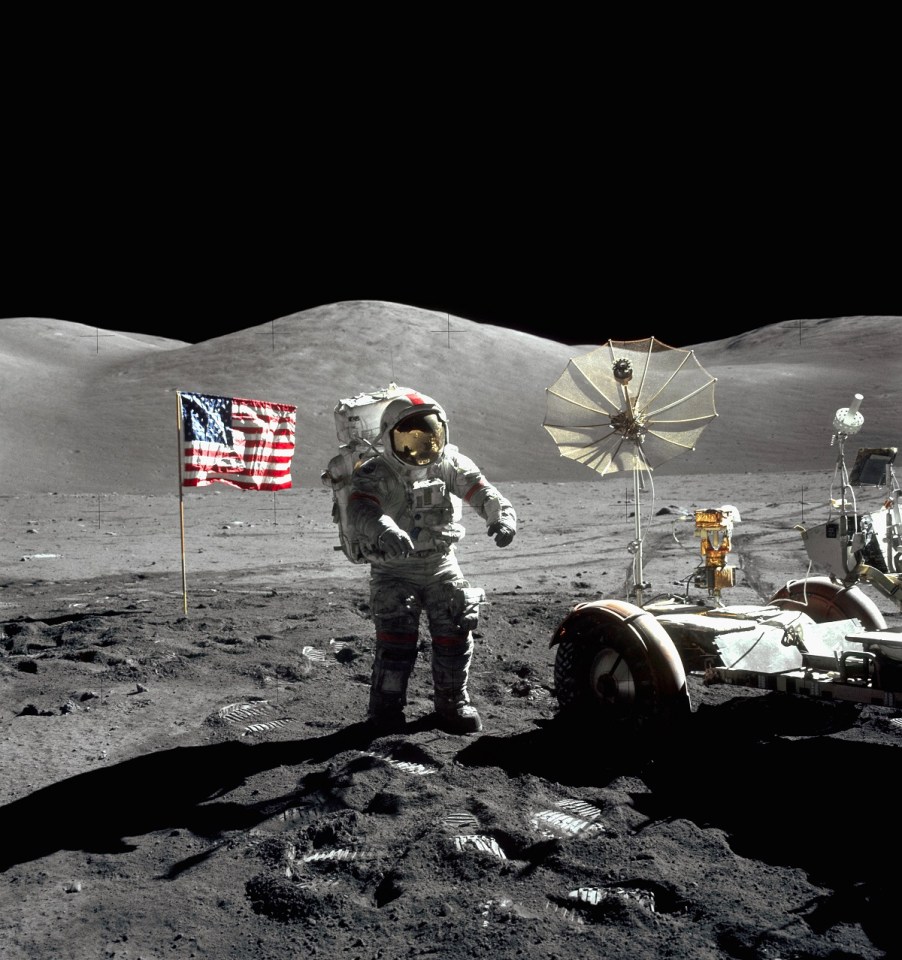
GM Is Headed to Space…Again
General Motors is exploring new frontiers…on the moon. In an announcement on May 26, 2021, GM said that they’ll be teaming up with Lockheed Martin to develop a moon buggy for NASA. GM and Lockheed Martin worked together to develop a conceptual Lunar Terrain Vehicle in an answer to a request for information (RFI) by NASA last year. This isn’t the first time that GM is sending a lunar rover to the moon; they’ve designed rovers that made it to the moon on three Apollo missions.

The NASA moon buggy will make it safer for Artemis astronauts to move around the surface of the moon. It will also be easier to transport scientific equipment.
In a statement, Lockheed Martin Space executive vice president said, “These next-generation rovers will dramatically extend the range of astronauts as they perform high-priority science investigation on the Moon that will ultimately impact humanity’s understanding of our place in the solar system.”
NASA has wanted to develop moon rovers for some time, and put out a RFI in early 2020. The RFI stated that NASA was interested in ideas which would allow them to explore more of the lunar surface using robots. NASA specifically wanted ideas that included autonomous driving, electric vehicle systems and the ability to traverse rough terrain.
Why did NASA choose GM to send a lunar rover to the moon?

Steve Clarke, NASA’s deputy associate administrator for exploration, said, “We also want to hear from industry leaders in all-terrain vehicles, electric vehicles, and more—this is not exclusive to the space industry,” notes Smith. “We want our rovers on the Moon to draw on, and spur, innovations in electric vehicle energy storage and management, autonomous driving, and extreme environment resistance.”
Currently NASA expects their astronauts to be able to walk up to a half mile in their spacesuits,. GM’s rover would allow astronauts to explore more of the moon. NASA wants to explore the lunar South Pole, which has never been visited by humans before.
This isn’t GM’s first space venture

In fact, GM has been to the moon before. GM worked with Boeing to develop the rover that the Apollo 15 astronauts drove on the moon in 1971. The GM lunar rover also went on two other moon missions, which basically makes them old pros in the space travel realm.
The Apollo rover traveled less than five miles on the surface of the moon. The Artemis rover is sure to tack on many more miles than that.
The obstacles facing the Artemis moon buggy will be different than those facing the Apollo rover. The sites that the Artemis moon buggy will traverse will be darker and colder.
The GM-Lockheed Martin partnership will look toward the future

Lockheed Martin says that the moon buggy they develop with GM won’t just suit NASA’s current needs, but anticipate what NASA will need as well. This look to the future is in line with GM’s recent announcement that they will be moving toward all electric vehicles by 2035.
So what does GM and Lockheed Martin’s moon buggy look like?
Right now there are no definitive designs drawn up. GM says they’re waiting for more information from NASA. They expect that there will be multiple designs, and possibly multiple rovers, too.


